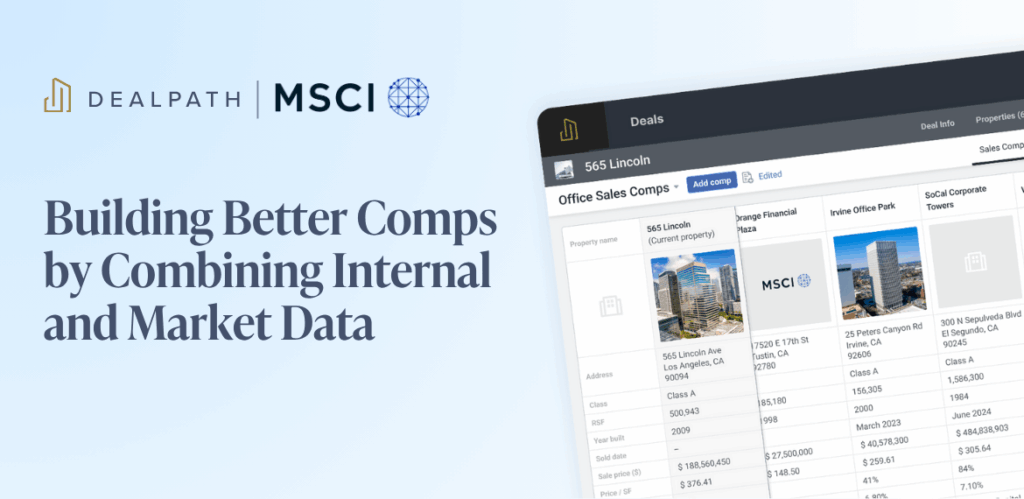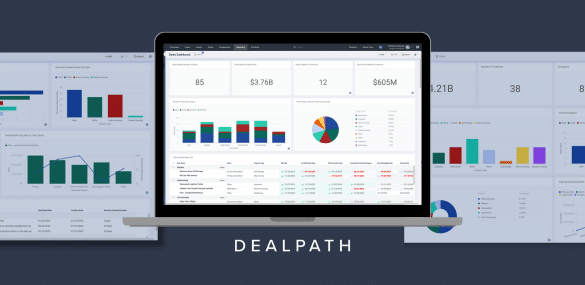Following record deal volume in the first quarter of 2022, CRE investment activity started decelerating toward the end of 2022 and continues to be sluggish in the first quarter of 2023. The market continues to be impacted by high interest rates, downward pressure on pricing, and rising inflation.
In a webinar last month, Thomas Byrne, proptech pioneer and Dealpath Executive Director, provided a firsthand look at how institutions are navigating and innovating in this volatile market environment. He also shared how investors are preparing for the inevitable transaction rebound, including strengthening their data-driven competitive edge to outperform the competition.
The State of the Market in 2023
According to Real Capital Analytics, global CRE transaction volume for 2022 was $1.1 trillion, the second-highest year on record behind 2021. However, nearly all the activity occurred in the first three quarters. Q4 2022 took a sharp decline as global CRE investment volume fell by 60% year-over-year to $226 billion, reported CBRE.
The CRE market is currently logjammed due to sky-high interest rates, economic volatility, rising capital costs and constrained liquidity. Recently, the collapse of Signature Bank and risks among other popular CRE banking institutions has created a new element of turmoil. In the wake of this friction, investors have reset their expectations on returns. There’s significant price dislocation between buyers and sellers, which has driven many buyers to go into pencils-down mode and many sellers to pull properties off the market, bracing for clearer waters.
Despite this chaos, industry experts agree that this slowdown will be short-lived, positioning investors to succeed in a new growth cycle. Dry powder for CRE remains at record highs; investors are ready to deploy this capital when the timing is right.
Honing in on Long-Term Secular CRE Growth Drivers
While the macroeconomic environment for commercial real estate is fraught with challenges, secular trends are shaping unique opportunities in particular asset classes.
The housing/multifamily sector, for example, continues to shine and remains supply constrained. Strong U.S. housing fundamentals should keep occupancy rates above 95% and fuel 4% rent growth in 2023, CBRE reported. Also, construction debt is less accessible and more expensive, driving a slowdown in much-needed new multifamily starts.
E-commerce is booming and will account for a bigger share of overall consumer and business transactions and has a big impact on CRE, including industrial and retail. Industrial real estate is projected to continue its strong performance in 2023. Widespread demand, fueled by logistics firms and retailers, have pushed vacancies to record lows, reported JLL.
In the retail sector, digital-impacted retail sales are forecast to total more than $2.4 trillion and account for more than 58% of total sales by 2023, according to a report from CBRE. As e-Commerce continues to steal the spotlight, investors are looking toward mixed-use strategies as a way to further diversify revenue streams.
In the office market, the persistent work-from-home trend continues. As many employees continue to push back on requests to return to the office, businesses are downsizing their footprints; vacating older, outdated office space; and pushing up vacancies in major markets. Green Street forecasts that office demand in the U.S. will decrease approximately 15% due to flexible work.
The secular growth trend toward technology and AI (artificial intelligence) will fuel massive change and efficiencies for every sector of the economy, including transportation, housing and education.
As the market continues to react to new tailwinds and obstacles, investors are carefully watching these trends and adapting or re-evaluating their investment strategies.
Investors Look to Speed Up During the Slowdown
Investors are putting in the effort now to prepare for the imminent rebound, while also working through the current challenges. The “flight to quality” continues, in which some firms are shifting away from evaluating riskier assets toward higher-quality properties. Similarly, in a move to reduce risk further along in the investment process, investors are seeking more signals of stability among partners and tenants. Higher degrees of diligence now equates to lower risk in the long term. Diligence now
Also, in the current volatile environment, the rising interest rates and growing cost of capital have significantly increased the risk of new deals. As a result of high interest rates, investors with the cash available to do so are allocating more equity, reducing reliance on expensive debt. When it comes to current investments, some investors are looking at reducing or eliminating leverage and putting more equity into their deals to de-risk long term.
Some Investors Capitalize on Pockets of Opportunity
All the while, some investors are looking toward lucrative property types like multifamily to pivot into resilience, while time-tested sectors like office continue to endure headwinds. According to Green Street, multifamily and industrial assets had a significant year of price appreciation in 2022, both experiencing more than 10% growth in asking rents, reaffirming CRE’s role as an excellent hedge against inflation.
Several other asset classes continue to outperform, including self-storage, data centers, lab/life sciences, digital infrastructure, and single-tenant net-leased (STNL) properties. Meanwhile, there are also opportunistic investors looking at the distressed asset category, seeking exposure to attractive properties but at better terms than the pre-downturn.
Organizations are Centralizing Data to Gain a Competitive Edge
Across the industry, firms are searching for simple and scalable ways to mobilize their data assets to strengthen their competitive advantages. The ability to slice and dice this data to more nimbly screen, underwrite and evaluate investments allows organizations to grow their pipelines faster, analyzing opportunities more efficiently and scaling deal flow without relying on new hires.
Instead of spending valuable time digging through shared spreadsheets, investors have access to boundless deal data at their fingertips. When the market rebounds, firms that placed a greater focus here will be positioned to win.
Beyond pipeline evaluations, centralizing deals in a deal management platform allows organizations to derive stronger insights from dead deals. Looking ahead, that data can inform pipeline strategies, enabling investors to better understand pipeline performance in specific asset classes.
Some Firms Pivot Into Debt to Fill Vacancies Left by Risk-Averse Banks
As banks have shifted away from lending to now-risky equity investors, some CRE lenders have found opportunity in distressed situations. Investors are moving up the capital stack and investing in more senior securities or trying to secure more favorable terms on debt instruments, in an innovative move to de-risk in this current turbulent environment. They’re looking more at debt options, especially taking advantage of refinancing situations where traditional lenders aren’t as eager. For now, banks remain largely on the sidelines.
Weathering the Storm: How to Win in a Volatile Market Environment
Watch the webinar to learn even more about how industry leaders are weathering the storm and preparing to accelerate as opportunities emerge.
Watch Now


